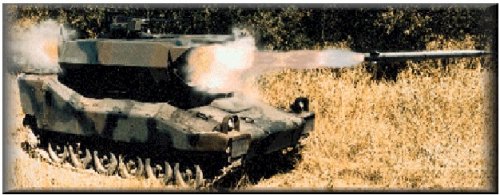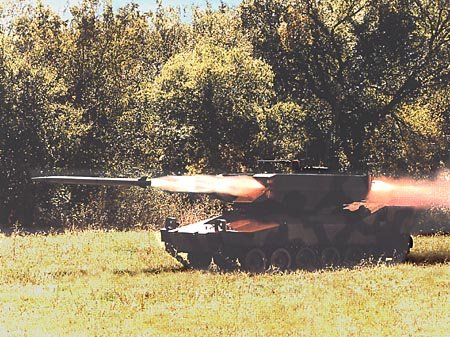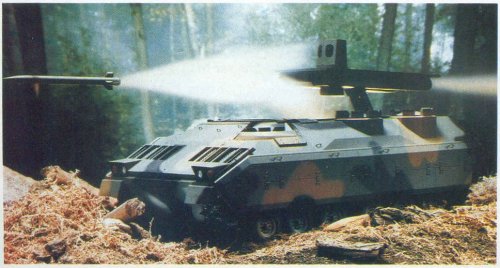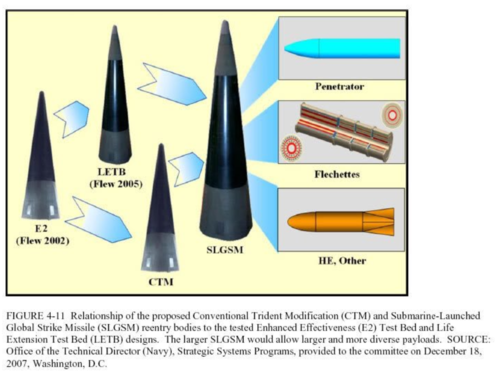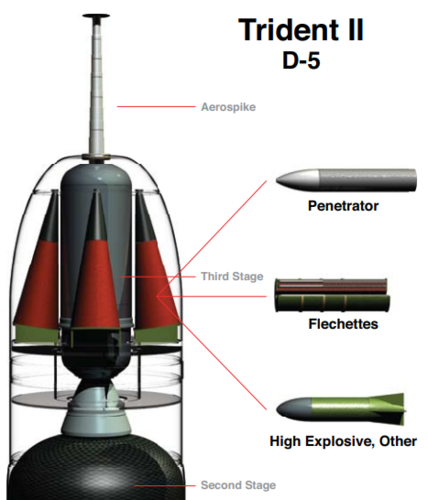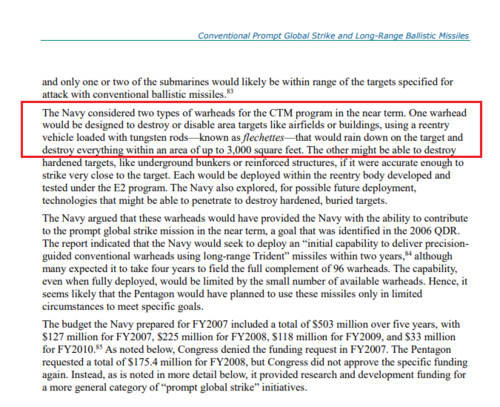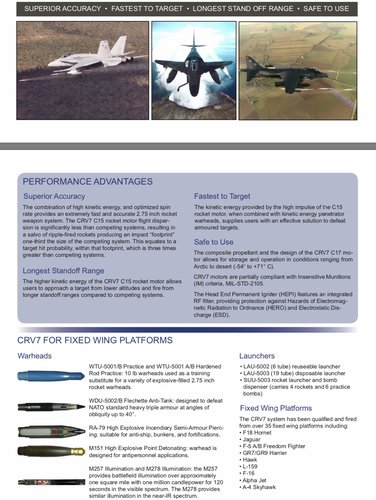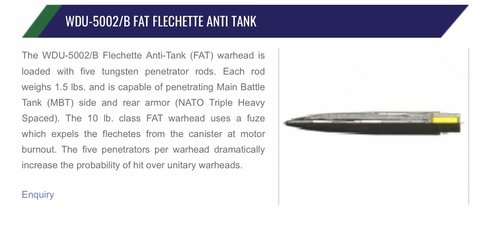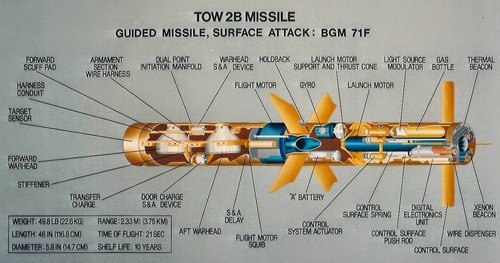You are using an out of date browser. It may not display this or other websites correctly.
You should upgrade or use an alternative browser.
You should upgrade or use an alternative browser.
LOSAT on a tracked vehicle.
- Thread starter Sferrin
- Start date
- Joined
- 9 October 2009
- Messages
- 21,976
- Reaction score
- 13,638
I somehow missed this topic before. Here's a couple of images I already posted a while back over at the 'Re-arming the Bundeswehr: Which Projects?' thread:


- Joined
- 18 May 2019
- Messages
- 640
- Reaction score
- 1,673
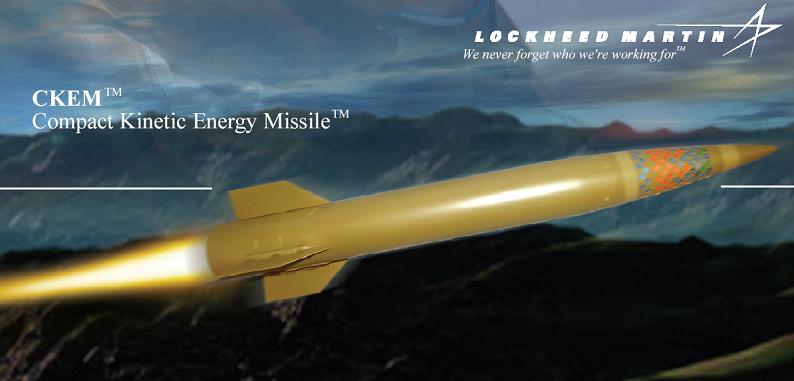
On the hunt for ways to defeat tanks outfitted with explosive reactive armour, the US Army is seeking vendor input on anti-tank guided missiles (ATGMs) and associated technologies that will be ready within eight years.
To do so, in part, the service is soliciting White Papers for ATGM weapons and technologies for its modernisation programmes, according to a 27 November request for information. Specifically, the service is interested in kinetic energy missiles, ATGMs with chemical energy warheads, and "manoeuvrable" missiles.
Janes | Latest defence and security news
Janes | The latest defence and security news from Janes - the trusted source for defence intelligence
www.janes.com
- Joined
- 3 June 2011
- Messages
- 18,339
- Reaction score
- 12,245
Turns out HV the enter flight path is not as efficient as HV only at terminal. Any easy retrofit on TOW.
A LOSAT/CKEM is going to hit the tank WAYYY harder than an EFP from a TOW. Not to mention the difference in time of flight. Also, even the latest TOW isn't Fire and Forget. That means your rate of fire is also going to be significantly less than LOSAT. (On the other hand TOW is much smaller. . .)
jsport
what do you know about surfing Major? you're from-
- Joined
- 27 July 2011
- Messages
- 7,733
- Reaction score
- 5,753
Would just have to reply, to look at the patents and why it is CKEM/LOSAT are not even discussed anymore. Tows dont have EFPs they can have an HV rod and in this case propelled.
Last edited:
- Joined
- 11 February 2007
- Messages
- 2,570
- Reaction score
- 4,383
Turns out HV the enter flight path is not as efficient as HV only at terminal. Any easy retrofit on TOW.
Hardly. If you want hypervelocity only in the terminal phase then you need a very short duration, high-g acceleration on command. That means a motor with a selectable sustain mode that can be switched instantly to a high boost mode - you'll be engaging targets at different ranges, so the boost needs to be switched in at the appropriate range from the target. That's the kind of capability that would be extremely valuable in an MRAAM or LRAAM, for the end-game kinematics, yet no AAMs offer it, which is probably a pretty good indication of the difficulty of producing such a motor. You aren't going to get that kind of switchable performance from a solid rocket motor, and no one wants liquid propellants in this kind of missile. You might be able to get it from a hybrid rocket, but they're still largely theoretical.
The one missile that does offer a sprint-mode terminal engagement is the SSN-27 Sizzler/3M-54K/T Klub, and that's a much larger missile that has to use a second stage and a separate rocket motor to do it.
TLDR: You're not getting that capability into a TOW, or any current generation ATGM.
Tows dont have EFPs they can have an HV rod and in this case propelled.
TOW 2B does use EFPs, and in any case the difference between an EFP and a shaped charge is one of degree, they're using the same effect, just triggering it at different distances.
No in-service missile uses a long-rod penetrator. The typical length of a long-rod fired from a tank gun is about 80cm, the entire TOW missile is only 1.16m (sans stand-off probe). If you want a long-rod in a TOW shape you need to build an entire new missile around it, and it'll still only be flying at TOW speeds, which isn't effective for long-rod penetrators (320m/s vs 1500+).
CRV7 with guidance kit counts?No in-service missile uses a long-rod penetrator.
- Joined
- 11 February 2007
- Messages
- 2,570
- Reaction score
- 4,383
CRV7 with guidance kit counts?No in-service missile uses a long-rod penetrator.
Not as having the same performance as a long-rod penetrator. Its tungsten flechettes are only rated against top or side armour and the longest one is only 8 inches.
- Joined
- 11 February 2007
- Messages
- 2,570
- Reaction score
- 4,383
I think there is Trident IINo in-service missile uses a long-rod penetrator.
And CRV7
Conventional Trident's not in service, and neither it nor CRV7 are long-rod penetrators, which tend to be about 40 times as long as they're wide.
o_0long-rod penetrators, which tend to be about 40 times as long as they're wide.
Can you name ANY with at least comparable L/D ratio, lol?
jsport
what do you know about surfing Major? you're from-
- Joined
- 27 July 2011
- Messages
- 7,733
- Reaction score
- 5,753
Please tell me where CKEM/LOSAT is even mentioned in DoD anymore. End of story.
Last edited:
- Joined
- 11 February 2007
- Messages
- 2,570
- Reaction score
- 4,383
Please tell me where CKEM/LOSAT is even mentioned in DoD anymore. End of story.
So what they're discussing is an entirely new missile compatible with existing TOW launchers (or 120mm guns). That's not an 'easy retrofit', it's a complete new system.
Incidentally the patent doesn't discuss several issues with the architecture - not the point of a patent, but important when discussing whether it makes sense.
They're making a virtue of CLOS by saying it allows positive control of the missile, but then say they get into issues with motor smoke obscuring the target. Simpler to move to a fire-and-forget or laser guidance mode, but then TOW-compatibility doesn't sound like a plus (though you could still use the launchers). And if you move to fire-and-forget then a slow cruise speed becomes a tactical weakness, not a virtue. If they didn't specify TOW, then this design may not be optimum.
The second issue is that where TOW has a boost and a flight motor, this would need a boost, a flight, and a terminal engagement motor, plus a missile body that separates into two. That's got to have cost implications.
And finally it appears the missile must be pointing directly at the target when the kill vehicle initiates: "Up to the point of separation, the flight control system can respond to guidance commands and maneuver the missile to maintain the aimpoint. " The text that follows appears to heavily imply the kill vehicle is unguided. Unless they're planning on piping the nose-view back to the operator (in which case it's not even using the TOW controller), there are going to be issues. I'd be interested to know how much of a typical TOW flight profile has the nose directly aligned with the target. I'd bet a good part of the typical trajectory has the missile pointed somewhere around the spot the target currently occupies, but not necessarily directly at it. Again they're weakening their design by insisting on TOW compatibility and using SACLOS, fire-and-forget or laser guidance would give a more flexible design.
It's important to remember patents aren't scientific papers, they're semi-legalised sales brochures trying to convince you that their originator's concept is both 1) unique and 2) better than the other guy's patent/product. So the claim that a lighter missile flying a dual mode profile is better isn't proven, it's a sales pitch. It's definitely lighter, but all the other issues with it that may mean it isn't a good idea are glossed over.
You say that no one is talking about CKEM/LOSAT anymore, and that's true, but this is a 2009 submission and no one's talking about a dual-speed, TOW compatible, hypervelocity missile either.
jsport
what do you know about surfing Major? you're from-
- Joined
- 27 July 2011
- Messages
- 7,733
- Reaction score
- 5,753
and it is good noone is discussing the specifics of how a TOW based system (the depiction clearly shows a TOW mounted on HMWV), as stated, gets it done. I should have left it alone. This discussion has no value.Please tell me where CKEM/LOSAT is even mentioned in DoD anymore. End of story.
So what they're discussing is an entirely new missile compatible with existing TOW launchers (or 120mm guns). That's not an 'easy retrofit', it's a complete new system.
Incidentally the patent doesn't discuss several issues with the architecture - not the point of a patent, but important when discussing whether it makes sense.
They're making a virtue of CLOS by saying it allows positive control of the missile, but then say they get into issues with motor smoke obscuring the target. Simpler to move to a fire-and-forget or laser guidance mode, but then TOW-compatibility doesn't sound like a plus (though you could still use the launchers). And if you move to fire-and-forget then a slow cruise speed becomes a tactical weakness, not a virtue. If they didn't specify TOW, then this design may not be optimum.
The second issue is that where TOW has a boost and a flight motor, this would need a boost, a flight, and a terminal engagement motor, plus a missile body that separates into two. That's got to have cost implications.
And finally it appears the missile must be pointing directly at the target when the kill vehicle initiates: "Up to the point of separation, the flight control system can respond to guidance commands and maneuver the missile to maintain the aimpoint. " The text that follows appears to heavily imply the kill vehicle is unguided. Unless they're planning on piping the nose-view back to the operator (in which case it's not even using the TOW controller), there are going to be issues. I'd be interested to know how much of a typical TOW flight profile has the nose directly aligned with the target. I'd bet a good part of the typical trajectory has the missile pointed somewhere around the spot the target currently occupies, but not necessarily directly at it. Again they're weakening their design by insisting on TOW compatibility and using SACLOS, fire-and-forget or laser guidance would give a more flexible design.
It's important to remember patents aren't scientific papers, they're semi-legalised sales brochures trying to convince you that their originator's concept is both 1) unique and 2) better than the other guy's patent/product. So the claim that a lighter missile flying a dual mode profile is better isn't proven, it's a sales pitch. It's definitely lighter, but all the other issues with it that may mean it isn't a good idea are glossed over.
You say that no one is talking about CKEM/LOSAT anymore, and that's true, but this is a 2009 submission and no one's talking about a dual-speed, TOW compatible, hypervelocity missile either.
Colonial-Marine
UAVs are now friend, drones are the real enemy.
- Joined
- 5 October 2009
- Messages
- 1,474
- Reaction score
- 1,327
What's wrong with LOSAT/CKEM where you'd need to reduce the high speed to just the terminal phase versus the whole flight?
I'd think the biggest problem is the lack of a missile with HE payload for use against targets other than AFVs. A common missile launcher also able to fire TOW would be a plus here since there are already "bunker buster" TOWs avalible and it's a (relatively) cheap missile.
I'd think the biggest problem is the lack of a missile with HE payload for use against targets other than AFVs. A common missile launcher also able to fire TOW would be a plus here since there are already "bunker buster" TOWs avalible and it's a (relatively) cheap missile.
To be fair, LOSAT doesn't need a warhead to do horrible damage to just about anything not armored like a battleship.What's wrong with LOSAT/CKEM where you'd need to reduce the high speed to just the terminal phase versus the whole flight?
I'd think the biggest problem is the lack of a missile with HE payload for use against targets other than AFVs. A common missile launcher also able to fire TOW would be a plus here since there are already "bunker buster" TOWs avalible and it's a (relatively) cheap missile.
No, but if you hit anything even remotely solid, the framentation effects will be impressive. Let's not even consider the rod, the rest of the missile also moves at that speed, only it's not nearly as sturdy. That will produce a lot of flying material.Not really. Ofc, what you hit you will break, but that's it. Nothing compared to healthy HE-FRAG or thermobaric warhead, which can wipe out dozen men at once behind cover or level some modest building.
- Joined
- 3 June 2011
- Messages
- 18,339
- Reaction score
- 12,245
No, but if you hit anything even remotely solid, the framentation effects will be impressive. Let's not even consider the rod, the rest of the missile also moves at that speed, only it's not nearly as sturdy. That will produce a lot of flying material.Not really. Ofc, what you hit you will break, but that's it. Nothing compared to healthy HE-FRAG or thermobaric warhead, which can wipe out dozen men at once behind cover or level some modest building.
LOSAT was also tested against the types of bunkers a TOW mod would be used against. Rubble.
It will be "impressive" compared to that wall being not hit at all. Compared to proper HE type munition it will be still inferior.No, but if you hit anything even remotely solid, the framentation effects will be impressive. Let's not even consider the rod, the rest of the missile also moves at that speed, only it's not nearly as sturdy. That will produce a lot of flying material.
- Joined
- 3 June 2011
- Messages
- 18,339
- Reaction score
- 12,245
Everyone does understand that velocity cubes or squares (?) drag so best to go only go HV at yds away.
I don't recall what the shortest distance was they tested it from. I know there was a 700m shot but 450m is tickling my brain. Will have to check later. (Surprised there doesn't appear to be a dedicated LOSAT thread. This one is about the tracked launcher.)
- Joined
- 11 February 2007
- Messages
- 2,570
- Reaction score
- 4,383
Everyone does understand that velocity cubes or squares (?) drag so best to go only go HV at yds away.
'best' in terms of energy expenditure, but that's not the same thing as best in terms of engineering simplicity, or best in terms of cost. No project is optimised for only one design driver, design is the art of compromise.
jsport
what do you know about surfing Major? you're from-
- Joined
- 27 July 2011
- Messages
- 7,733
- Reaction score
- 5,753
LOSATs original concept was to give light units an ability to stop tanks so light units would not be speed bumps. The missiles were too large, causing all sorts of operational problems. Armored units would even have reload issues. CKEM was little better and the range never made up for the logistics.
Modern energetics could change all that, but the missile still needs cruise and then HV to have range and justify the size. Army is looking at ramjets,
Modern energetics could change all that, but the missile still needs cruise and then HV to have range and justify the size. Army is looking at ramjets,
- Joined
- 3 June 2011
- Messages
- 18,339
- Reaction score
- 12,245
Ramjets are worse than rockets as far as acceleration/size.LOSATs original concept was to give light units an ability to stop tanks so light units would not be speed bumps. The missiles were too large, causing all sorts of operational problems. Armored units would even have reload issues. CKEM was little better and the range never made up for the logistics.
Modern energetics could change all that, but the missile still needs cruise and then HV to have range and justify the size. Army is looking at ramjets,
jsport
what do you know about surfing Major? you're from-
- Joined
- 27 July 2011
- Messages
- 7,733
- Reaction score
- 5,753
need less carried fuel and need only range not acceleration.Ramjets are worse than rockets as far as acceleration/size.LOSATs original concept was to give light units an ability to stop tanks so light units would not be speed bumps. The missiles were too large, causing all sorts of operational problems. Armored units would even have reload issues. CKEM was little better and the range never made up for the logistics.
Modern energetics could change all that, but the missile still needs cruise and then HV to have range and justify the size. Army is looking at ramjets,
- Joined
- 11 February 2007
- Messages
- 2,570
- Reaction score
- 4,383
need less carried fuel and need only range not acceleration.
The configuration you've been arguing for is absolutely dependent on high acceleration.
- Joined
- 3 June 2011
- Messages
- 18,339
- Reaction score
- 12,245
need less carried fuel and need only range not acceleration.Ramjets are worse than rockets as far as acceleration/size.LOSATs original concept was to give light units an ability to stop tanks so light units would not be speed bumps. The missiles were too large, causing all sorts of operational problems. Armored units would even have reload issues. CKEM was little better and the range never made up for the logistics.
Modern energetics could change all that, but the missile still needs cruise and then HV to have range and justify the size. Army is looking at ramjets,
Why would anybody need air-breathing range for an antitank missile?
- Joined
- 11 February 2007
- Messages
- 2,570
- Reaction score
- 4,383
Fundamental lesson of forty years waiting for 3rd Shock Army and 8th Guards Tank Army to swarm over the Inner-German Border: range isn't much use if the terrain doesn't let you use it. The existing range capability of current generation ATGMs exceeds the likely target engagement range in most terrain.
jsport
what do you know about surfing Major? you're from-
- Joined
- 27 July 2011
- Messages
- 7,733
- Reaction score
- 5,753
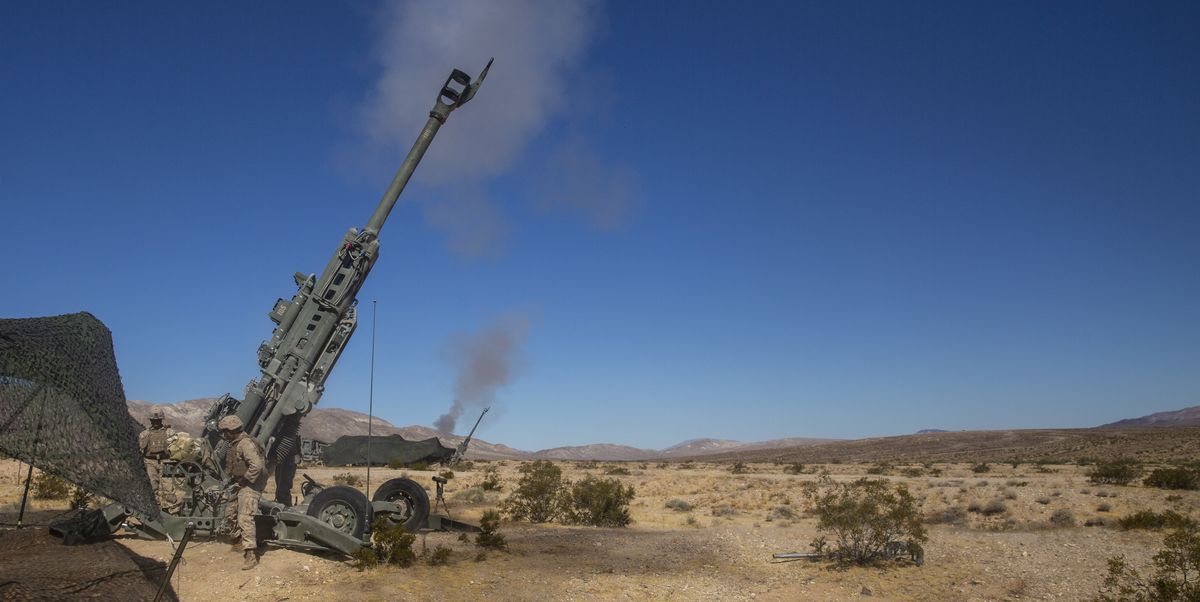
Ramjets Will Drastically Improve Missiles and Artillery Shells
Hyper-fast, air-breathing engines are the wave of the future.
...That's a Popular Mechanics article.
Ramjets Will Drastically Improve Missiles and Artillery Shells
Hyper-fast, air-breathing engines are the wave of the future.www.popularmechanics.com
jsport
what do you know about surfing Major? you're from-
- Joined
- 27 July 2011
- Messages
- 7,733
- Reaction score
- 5,753
see Apache projects posting.....That's a Popular Mechanics article.
Ramjets Will Drastically Improve Missiles and Artillery Shells
Hyper-fast, air-breathing engines are the wave of the future.www.popularmechanics.com
Arguing for Rams at this point is getting old.
Not really. The rod would just go right through, and the body woudl damage maybe one compartment? There's a reason ship killing missiles tend to have big warheads. There's a lot of ship, and it tends to be blast hardened.I wonder how effective the CKEM would be against a ship. Could probably get a mission kill.
Similar threads
-
-
U.S. Army Armored Gun System program (early 1980s)
- Started by Grey Havoc
- Replies: 8
-
US Army's 1990s Armored Systems Modernization (ASM) Program (FIFV, Block III Tank, Crusader)
- Started by RyanC
- Replies: 77
-
-
US Army Proposes Smaller Squads, Lighter Vehicles (or goodbye GCV?)
- Started by bobbymike
- Replies: 120

